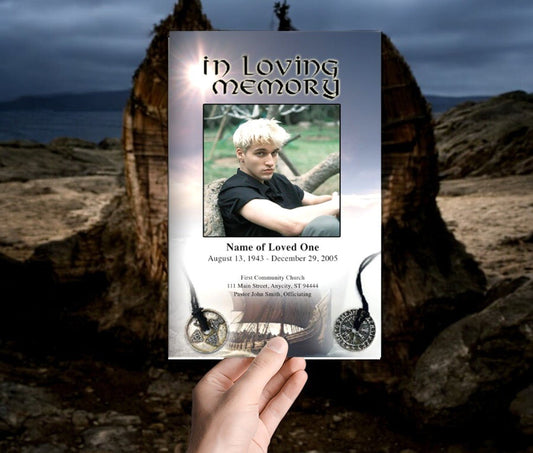What Happens in Body Embalming? A Step-by-Step Overview

Embalming is a process used to preserve a body after death, primarily to delay decomposition and make the body suitable for viewing during a funeral or memorial service. It’s a procedure deeply rooted in history, with variations practiced by different cultures over the centuries. Today, embalming is most commonly used in Western funeral practices. This article will walk you through what happens during the embalming process, explaining the steps involved and the purpose of each.
The Purpose of Embalming
The primary purpose of embalming is to temporarily preserve the body, allowing time for funeral arrangements and public viewings. It also helps in restoring a lifelike appearance to the deceased, which can provide comfort to grieving families. Additionally, embalming can reduce the presence of bacteria and other microorganisms, making the body safer to handle during funeral preparations and services.
The Embalming Process: A Step-by-Step Guide
1. Initial Preparations
When a body arrives at the funeral home or mortuary, the embalming process begins with initial preparations. The embalmer first verifies the identity of the deceased and reviews any instructions from the family or medical authorities. The body is then washed and disinfected to remove any external contaminants. This cleansing process also helps to eliminate any odors and prepares the body for the subsequent steps of embalming.
2. Setting the Features
Before the actual embalming begins, the embalmer sets the features of the deceased to give them a natural and peaceful appearance. This involves closing the eyes and mouth. The eyes are typically closed using specially designed eye caps or adhesive to keep the eyelids in place. The mouth may be closed using sutures or a small device known as a mouth former. Care is taken to position the facial muscles in a way that gives a restful expression, often described as a "natural" look.
3. Arterial Embalming
Arterial embalming is the primary method used to preserve the body. It involves the injection of a preservative solution into the body's arterial system, replacing the blood and other bodily fluids. Here’s how it works:
Incision and Cannulation: The embalmer makes an incision, typically in the carotid artery (located in the neck) or the femoral artery (in the thigh), to access the arterial system. A cannula (a small tube) is inserted into the artery to allow the injection of the embalming fluid.Injection of Embalming Fluid: A pump is used to inject the embalming fluid into the artery. As the fluid is pumped in, it circulates through the arterial system, reaching the capillaries and tissues throughout the body. The embalming fluid typically contains a mixture of formaldehyde (the primary preservative), methanol, ethanol, and water, along with dyes to restore the natural color of the skin.
Drainage of Blood: As the embalming fluid is injected, the blood and other bodily fluids are drained from the veins through a separate incision, usually in a vein opposite the injection site. The blood is collected and disposed of according to health and safety regulations.
Distribution: The embalmer monitors the distribution of the fluid to ensure it reaches all parts of the body. This step is critical to ensure that the entire body is adequately preserved.
4. Cavity Embalming
Cavity embalming is the next step, focusing on the internal organs, which decompose more quickly than other parts of the body. Here's what happens during this process:
Aspiration: The embalmer uses a long, hollow instrument called a trocar to puncture the abdominal and thoracic cavities. The trocar is used to aspirate (suction out) the contents of the stomach, intestines, lungs, and other internal organs. This removes gases, fluids, and semi-solids that contribute to decomposition.Injection of Cavity Fluid: After aspiration, the embalmer injects a concentrated cavity fluid into the cavities to further preserve the internal organs. This fluid typically contains a stronger concentration of formaldehyde and other preservatives to ensure thorough preservation.
Sealing: Once the cavity embalming is complete, the incisions made during the process are sutured closed, and the trocar entry points are sealed to prevent any leakage.
5. Washing and Grooming
After the embalming process is complete, the body is washed again to remove any residual fluids and chemicals. The embalmer then begins the grooming process, which may include washing and styling the hair, trimming facial hair, applying makeup, and dressing the body in the clothing provided by the family. The goal is to present the deceased in a manner that is comforting to the family and friends who will view the body.
6. Restoration (if needed)
In some cases, the body may require additional restoration work, especially if the deceased has suffered trauma, illness, or other conditions that have altered their appearance. This can involve reconstructive techniques, such as wax modeling, to restore a natural look. Special makeup may also be used to cover any discolorations or imperfections, ensuring that the body appears as lifelike and peaceful as possible.
The Final Presentation
Once all the steps of embalming, washing, grooming, and restoration are complete, the body is placed in the casket for viewing. The embalmer ensures that the body is positioned comfortably and that the clothing and surroundings are arranged neatly. The casket is then ready to be presented during the funeral service or viewing.
The Importance of Embalming
Embalming plays a significant role in modern funeral practices, particularly in cultures where viewing the body is an important part of the mourning process. It allows families and friends to see their loved one one last time, often helping them process the reality of death and begin the journey of grief.
Embalming also provides practical benefits, such as preserving the body for longer periods, which can be essential if the funeral is delayed or if transportation of the body is required. In some cases, embalming is legally required, particularly if the body needs to be transported across state or national borders.
Ethical Considerations and Alternatives
While embalming is a common practice, it is not without its ethical and environmental considerations. The use of formaldehyde, a known carcinogen, and other chemicals in embalming fluid has raised concerns about the long-term impact on the environment. As a result, there is a growing interest in alternative preservation methods, such as green burial, which focuses on natural decomposition without the use of chemicals.
Some families may also choose to forgo embalming entirely, opting for immediate burial or cremation, or for cultural or religious reasons. It’s important for families to be aware of their options and to make decisions that align with their values and beliefs.
Embalming is a complex process that involves multiple steps to preserve the body, restore its appearance, and prepare it for viewing. While it plays an important role in modern funeral practices, it's also a process that raises important ethical and environmental questions. Understanding what happens during embalming can help families make informed decisions about how they want to honor and remember their loved ones. Whether choosing embalming or an alternative method, the most important thing is that the chosen approach respects the wishes of the deceased and provides comfort to those left behind.
tags: funeral flyers




